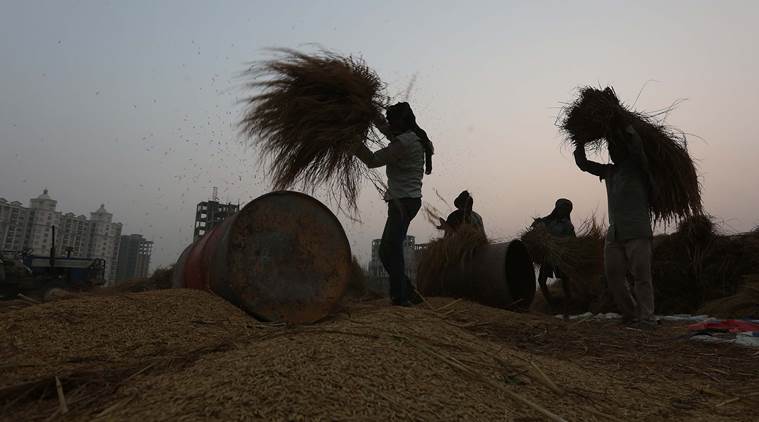Stay updated with the latest - Click here to follow us on Instagram
Less than 15% kharif sowing recorded so far in Maharashtra
Taking into account the climate change, the Maharashtra government has put in place a long term action plan to make farmers adapt to the growing challenges ahead.
 Kharif sowing has been recorded to be less than 15 per cent so far. (Representational)
Kharif sowing has been recorded to be less than 15 per cent so far. (Representational)
By the third week of June, less than 15 per cent kharif sowing was recorded across Maharashtra. The state agriculture department has now advised farmers to wait for the monsoon to stabilise before taking up full-fledged sowing. A senior secretary in the ministry of agriculture said, “The climate change leading to new rainfall patterns are a serious cause of concern. We expect the monsoon to stabilise by June end or first week of July.”
Taking into account the climate change, the Maharashtra government has put in place a long term action plan to make farmers adapt to the growing challenges ahead. Under the Maharashtra State Adaptation Action Plan on Climate Changes, interventions recommended include integrating climate change projections and uncertainties into state disaster management plans and disaster risk reduction strategies, incorporating climate change concerns into development plans and land use planning and orienting land use zoning and development planning to protect ecosystems and make them more resilient to climate change.
Factoring regional variations, the state study predicts an increased temperature and rainfall. It also warns of longer gaps between rains. While Amravati and Aurangabad divisions are likely to be impacted due to rising temperatures, higher rainfall is predicted for Nashik and the state action plan stresses preparing individual districts or regions to adapt to the climate challenges. Amongst the recommendations include crop diversification patterns, water conservation and greater investment in weather forecast and warning systems.
It is noted that an increase by one to four degree centigrade temperature could lead to a decrease in rice yield upto 49 per cent. Temperature increase of one to 2.3 per cent results in shortfall of sorghum upto 17.5 per cent while soybean yield goes down by 30 per cent. Cotton yield also goes down considerably with a 3.2 per cent temperature rise. It was also noted that increased rainfall and longer gaps led to heightened pest attacks in cotton and red gram.
Agriculture universities have been asked to explore new varieties adaptable to the climate challenges. Along with these, localised forecast and crop specific advisories can help farmers. There is greater emphasis on protective irrigation and agriculture practises. Greater monitoring of soil health, for both winter and summer crops, has become mandatory to minimise losses. Denser networks of monitoring stations along with surveillance for controlling pests and disease due to climate changes are measures being provided to farmers.
The shift from chemical to organic farming adopting integrated system to curtail expenditure and to give a thrust to conservation and renaturalisation of river and water structures to cope with longer dry spells are amongst schemes undertaken.
Officials admitted it is a formidable task as every district’s behaviour varies. District wise vulnerability index and ranking shows Jalgaon as the most exposed to climate risks, and Sangli the least. While tribal Nandurbar has the least adaptive capacity, Sindhudurg ranks the highest in adaptive index. When it comes to climatic risks, Gadchiroli is most to be impacted and Aurangabad the least.







